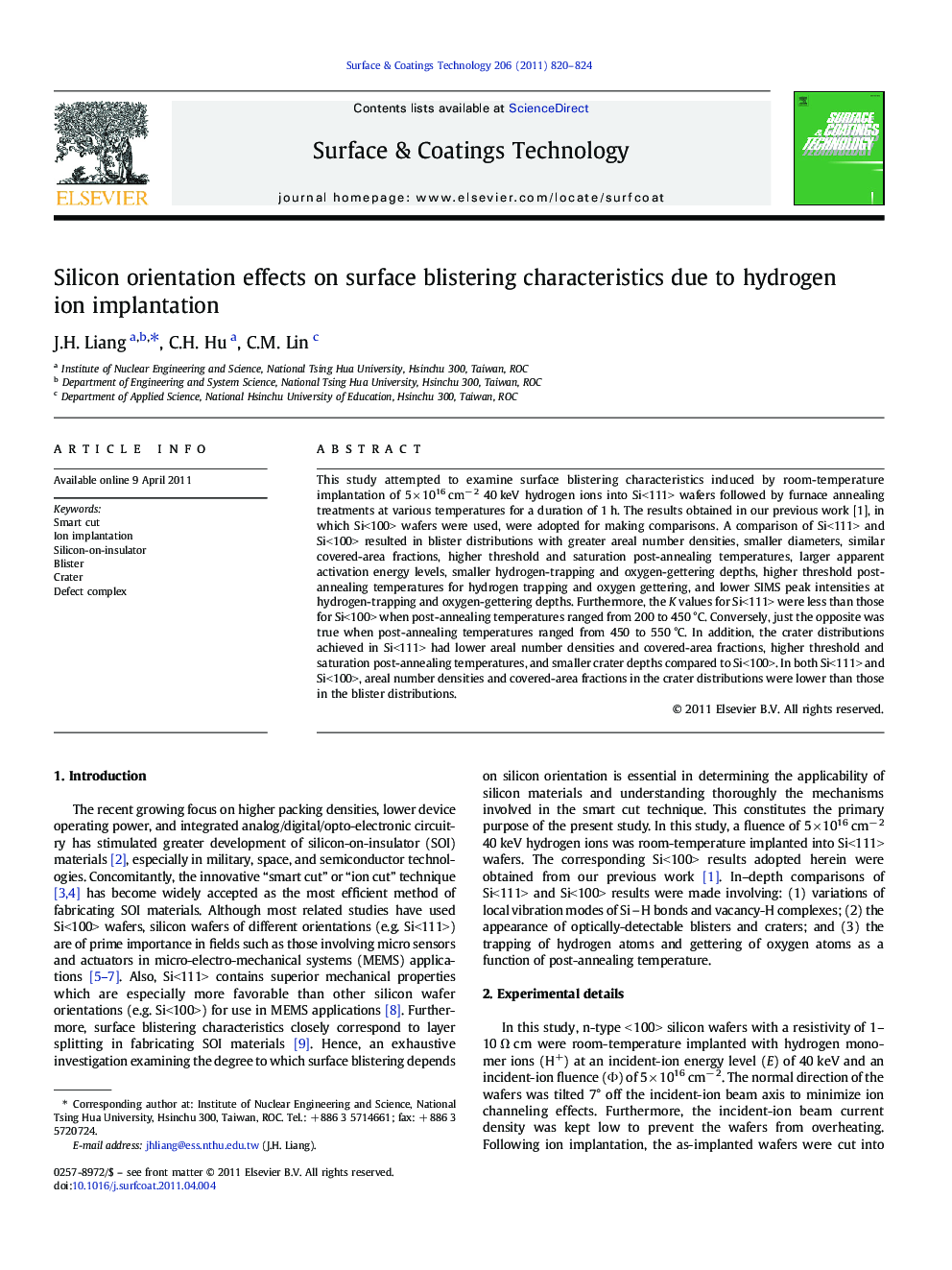| کد مقاله | کد نشریه | سال انتشار | مقاله انگلیسی | نسخه تمام متن |
|---|---|---|---|---|
| 1658860 | 1008362 | 2011 | 5 صفحه PDF | دانلود رایگان |

This study attempted to examine surface blistering characteristics induced by room-temperature implantation of 5 × 1016 cm− 2 40 keV hydrogen ions into Si<111> wafers followed by furnace annealing treatments at various temperatures for a duration of 1 h. The results obtained in our previous work [1], in which Si<100> wafers were used, were adopted for making comparisons. A comparison of Si<111> and Si<100> resulted in blister distributions with greater areal number densities, smaller diameters, similar covered-area fractions, higher threshold and saturation post-annealing temperatures, larger apparent activation energy levels, smaller hydrogen-trapping and oxygen-gettering depths, higher threshold post-annealing temperatures for hydrogen trapping and oxygen gettering, and lower SIMS peak intensities at hydrogen-trapping and oxygen-gettering depths. Furthermore, the K values for Si<111> were less than those for Si<100> when post-annealing temperatures ranged from 200 to 450 °C. Conversely, just the opposite was true when post-annealing temperatures ranged from 450 to 550 °C. In addition, the crater distributions achieved in Si<111> had lower areal number densities and covered-area fractions, higher threshold and saturation post-annealing temperatures, and smaller crater depths compared to Si<100>. In both Si<111> and Si<100>, areal number densities and covered-area fractions in the crater distributions were lower than those in the blister distributions.
Research Highlights
► We studied surface blistering characteristics due to H+ implanted in Si<111> followed by furnace annealing at various temperatures for 1 h.
► The blister and crater distributions are investigated and also compared to those using Si<100> to conclude post-annealing-temperature and Si-orientation dependence.
► A post-annealing temperature of 550 °C is most optimal for both Si<111> and Si<100>.
Journal: Surface and Coatings Technology - Volume 206, Issue 5, 25 November 2011, Pages 820–824